Gifu Prefecture (岐阜県) has much to offer to Chubu, central Japan. From the Japanese Alps, the little Kyoto in Takayama and Shirakawa-go’s timeless hand-clasped houses to the therapeutic hot springs in Gero, we’ve got a taste of the northern Hida region in four days.
Some would like to know how long it takes to go to Gifu, after browsing through photos of the picturesque countryside on our Facebook page, thinking that it might take a longer journey than major cities in Japan.
To fully maximize our Gifu trip, we boarded a night flight (6.5-hour) and arrived at 9ish in the morning at Chubu Central Japan Int’l Airport (Centrair) in Nagoya. FYI, Japan is one hour ahead of Singapore.
If you have time, head to the tourist information centre at Centrair to pick up brochures and maps. Remember to get “Gifu – The Complete Travel Guide”, a very handy little book filled with top attractions and things to do in different seasons, where to eat and accommodations for independent travelers. The travel guide includes locality maps, details on what trains and buses to take, and the costs of getting to those destinations, so that it’s helpful and practical for planning an itinerary.
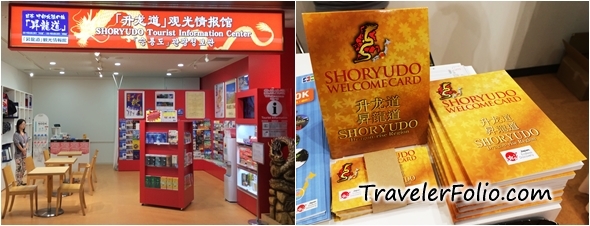
Besides, the front desk at the tourist information centre can assist you on information like transport services to places in Shoryudo (Dragon-rise Region), the area of nine prefectures in Chubu (literally, the central part of Japan) and Hokuriku. Also, ask for the Shoryudo Welcome Card which offers tourists with an extensive list of discounts and special deals at restaurants, bars, hotels, shops, tourist attractions and public transit. Otherwise, you can download Shoryudo Welcome Card.
It’s very convenient to travel around Japan on the extensive transport system and with the help of the tourist information centres. That’s how we could cover the main attractions at ease within four days. Central Japan Int’l Airport Station is linked to the airport terminal building via a short walkway. The airport train station serves the Meitetsu line only; however, connections to other rail lines including the Shinkansen bullet train and JR can be made from Nagoya Station which is less than 30-minute away from the airport train station.
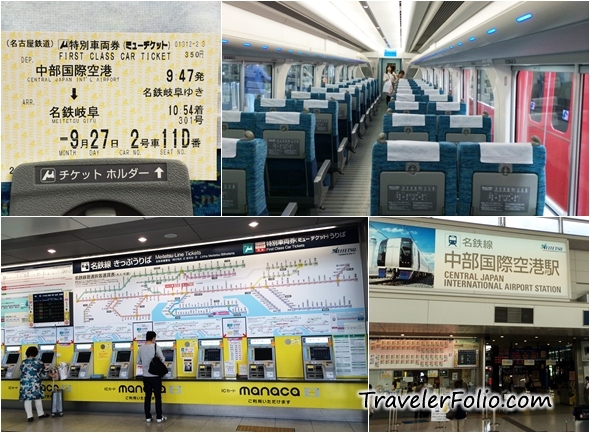
Our flight was delayed; however, in less than 7-minute, we still managed to get the tickets at Central Japan Int’l Airport Station and board the train on the Meitetsu line bound for Gifu. The ticket costs ¥1310, an additional ¥350 to reserve a seat. During the journey, English announcement is made at each train stop so it’s easy for travellers like us who don’t understand the local language. The train ride from the airport to Meitetsu Gifu Station takes 67-minute. You may want to know there are lockers to store your luggage (if you haven’t checked in to the hotel like us). A small locker costs ¥300 and a medium-sized at ¥500 for a day.

Cormorant Fishing
So, where was our first stop? Did you know that Gifu is famous for cormorant fishing (ukai)? The 1300-year-old traditional fishing method involves skilful Fishing Masters who use trained cormorants to catch river fish along the pristine Nagara River. There are only six cormorant Fishing Masters in the Nagara area who have inherited the skills within their families to carry out such extraordinary fishing method; they are also known as the “Imperial Cormorant Fishing Masters” by the Imperial Household Agency.

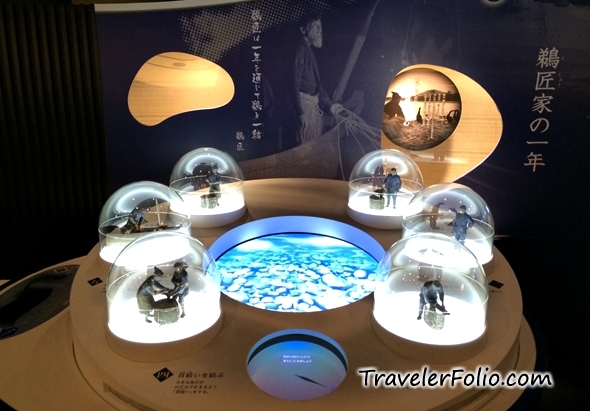
The cormorant fishing event takes place at the east of the Nagarabashi Bridge near Gifu Castle at dusk from May 11 to October 15 every year. To understand more about this fishing tradition and observe the live cormorant exhibition, head to the Nagaragawa Ukai Museum. Opened a year ago, it’s the only museum in Japan which documented the traditional culture of cormorant fishing through interactive exhibits and vivid displays. On non-fishing days, you can even watch the live show of cormorant fishing in a tank at the museum.
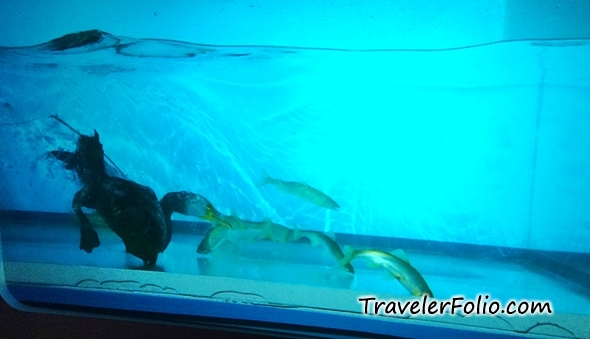
Before entering the Exhibition Hall, visitors will walk past the view lounge accessible to the public (admission free). There are rows of cushy seats where anyone can sit back and relax while soaking in the surrounding views along the Nagara River. We could see a bit of Gifu Castle situated atop Mt. Kinka, the most famous mountain in the city.
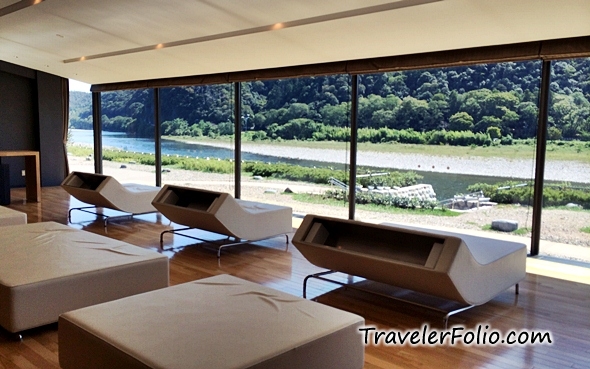
A view from the lounge area.

The Exhibition Hall is pretty compact, featuring the history and impressions of cormorant fishing, the introduction of the Imperial Cormorant Fishing Masters in their formalities and costumes, the secrets of why cormorant fishing has attracted people for over 1300 years, and settings that depict the Nagara River and ayu (sweetfish).
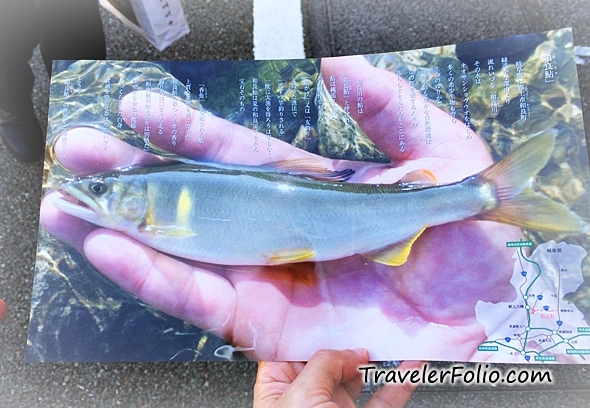
Migratory cormorants are caught when they are young. If domesticated, the cormorants can live as long as 20 years. When they are 2 to 3-year-old, they can start to catch for the Fishing Masters. If the bird can no longer work, it would be taken care of.
For five months of the year, each of the six Imperial Fishing Masters would select ten to twelve healthy cormorants for the night fishing activity. The cormorants catch ayu, hold up to five or six of them (700g) in their crop and the Fishing Masters would draw back the birds by using the ropes attached to their bodies. A ring is tied around the neck of each bird; as a result, they cannot swallow the fish.
(A rope that is use to tie around the cormorant.)
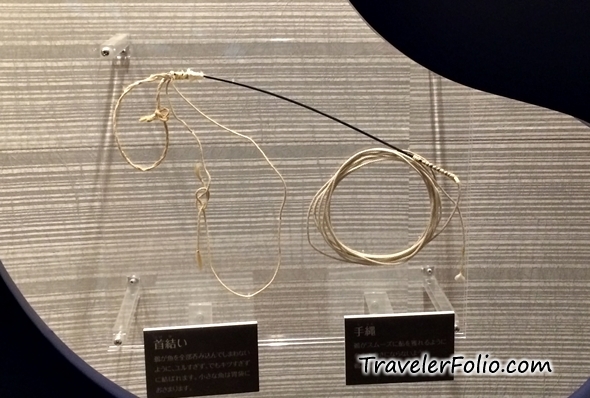
There is a picture scroll-shaped screen displaying a life-sized cormorant fishing boat with coordinated sound and lighting effects at the Nagaragawa Ukai Introduction Theater, giving the feel like you are at the cormorant fishing event. Made of quality pine wood, a cormorant fishing boat costs as much as ¥3,000,000!
With a history dating back to about 1300 years, countless officials have enjoyed watching cormorant fishing when visiting Gifu; even the worldwide icon Charles Chapin watched the Cormorant Fishing twice!
(The attire of a Cormorant Fishing Master. )
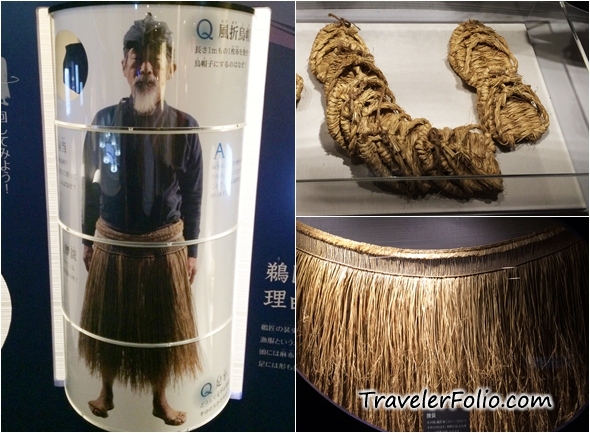
The Special Exhibition room showcases important folk cultural property including a set of cormorant fishing tools and images of the Imperial family observing the cormorant fishing event.
We had a quick, yet delicious and healthy lunch at Nagaragawa Vegee’s Café & Marche at the museum. Steamed and served in dim sum containers, the meal is unpretentious and natural flavours are retained (¥1580). The restaurant overlooks the peaceful surroundings of the Nagara River, so diners can enjoy lunch with a view. Visitors can have some alcoholic beverages at the restaurant bar at night after watching cormorant fishing.

Address of Nagaragawa Ukai Museum: 51-2 Nagara, Gifu City 502-0071, Japan.
Admission: ¥500/ ¥250 (adult/ child)
Email: info@ukaimuseum.jp
URL: http://ukaimuseum.jp
How to get to Nagaragawa Ukai Museum?
Take bus No. 4 from Meitetsu Gifu Station to “Nagara-bashi”. The 20-minute bus ride costs ¥200 (minimum bus fare). However, please check with the tourist information centre located at Meitetsu Gifu Station for the direction and details.
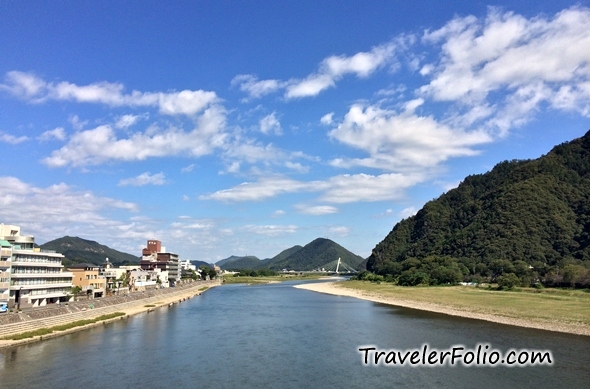
Nagara River – the cormorant fishing event starts at the east of the Nagarabashi Bridge

After lunch, we strolled along the Nagara River and headed to Kawara-machi or the “Riverside Town” which is like an open air museum filled with lattice-walled century-old houses. The lattice windows allow wind and sun to get into the house – eco-friendly, architectural wisdom of the olden days.
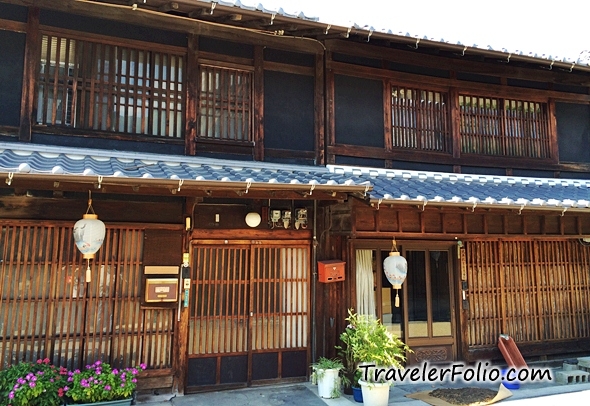
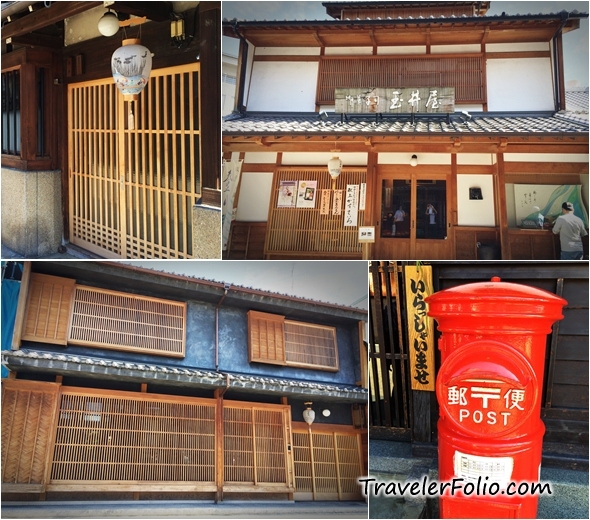
Visitors can spend some leisure time at Kawara-machi before boarding the Cormorant Fishing View Boat at one end of the street. At the old town, you can find traditional craftwork “Gifu Uchiwa” (flat fans) as well as Japanese confectioners selling ayu-shaped sweets, like a pancake with filling
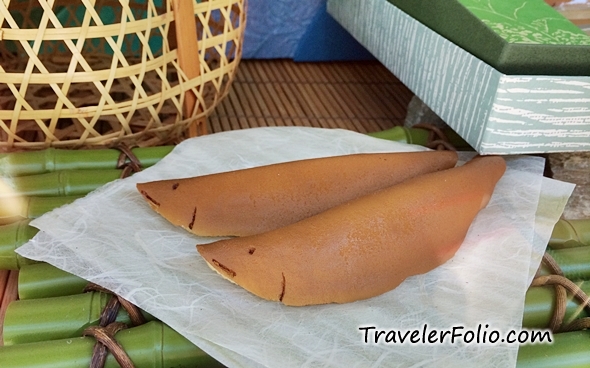
Hida Furukawa
We took the bus back (20-minute) to Meitetsu Gifu Station and embarked on a 2-hour journey by JR Train to Hida Furukawa, a preserved historic town nestled in the Alps of Gifu Prefecture. The area is known for having highly skilled carpenters and the annually-held (in April) Furukawa Festival which features resplendent floats and performers. If you miss the festival, the Hida Furukawa Festival Hall houses the shrines, festival floats and decorations for visitors to learn about the special occasion. Takayama is merely 15-minute train ride away from Furukawa.

(Hida Furukawa: 493 m above sea level. It was pretty cold at night when we were there last week.)
For the first night, we stayed at a Japanese inn – Ryori Ryokan Uzuki. The ryokan looks like a luxury home to me, very well-maintained as if it was new. There are only 5 guest rooms, accommodating up to 18 guests.
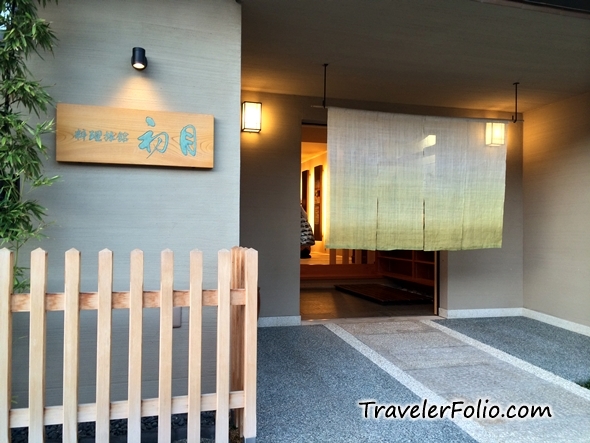
Our room has a small entrance hall that leads to a spacious area where futons will be laid on the tatami while dinner is served in the dining room. Like traditional Japanese-style interior, minimalistic yet elegant, the room features sliding doors, a tea table with a tea box, a vintage dressing table, and a decorative area displaying fresh flowers, ornaments and a wall painting. (Don’t place anything on this decorative area.)
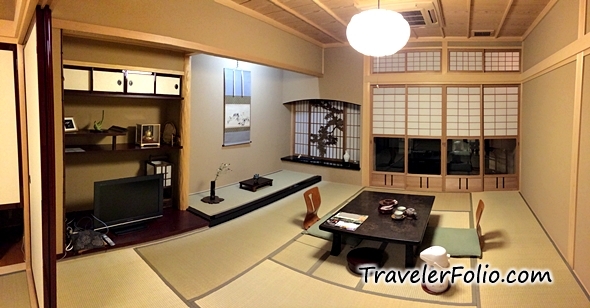
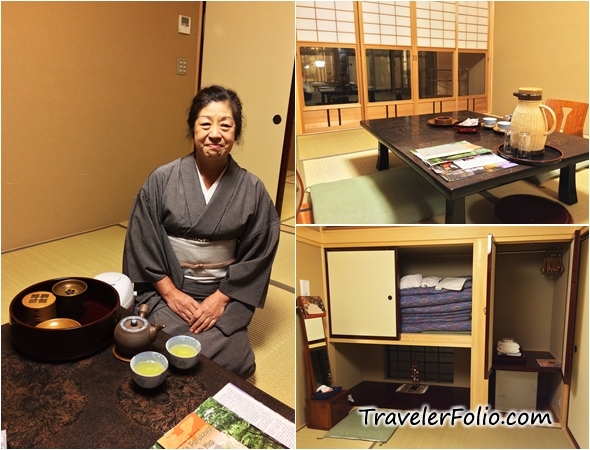
Like most ryokan, the bathroom is in the common area, though our room has attached toilet. Spacious and neat, the room is appointed with a flat-screen TV and a balcony facing the landscape garden. This was the first time we slept on futons laid on tatami. It is proven to be comfortable enough as I slept through the night!
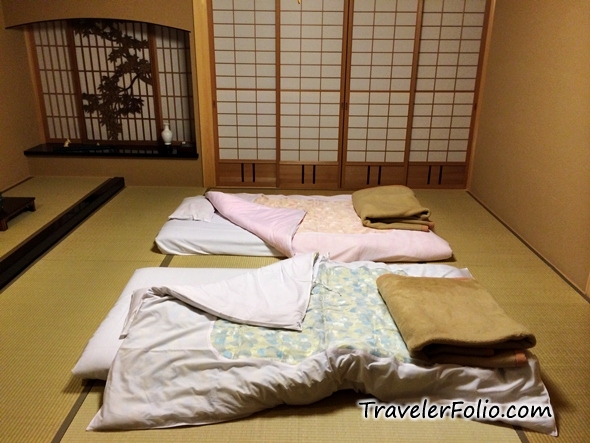
Most ryokan include dinner and breakfast as part of the room package; therefore, the quality of the food is usually good – traditional Japanese cuisine known as kaiseki is served with local specialties. And it’s always a big feast for us.
(Lunch)
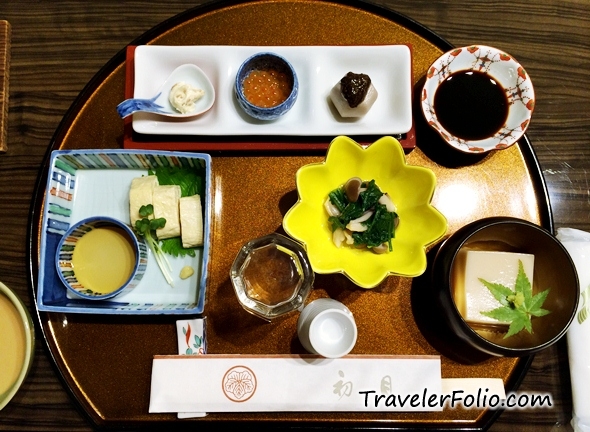
The white fish slice on the right is cultured blowfish.
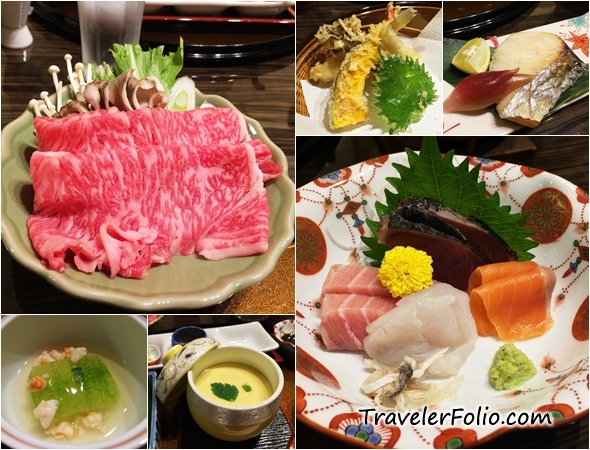
Dinner served at the ryokan.

(Traditional Japanese breakfast, the fish on the right is ayu that’s sweetfish.)
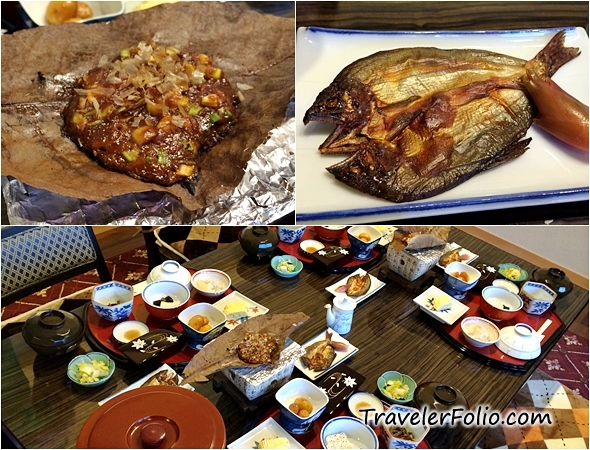
Address of Ryori Ryokan Uzuki: Kanamori town 11-15, Hida Furukawa / 3-minute walk from JR Hida Furukawa Station.
URL: http://www.hida-kankou.jp/reserve/1000000016/
On day 2, we explored the Japanese Alps with Hida Satoyama Cycling tour before heading to Takayama and Okuhida for onsen. Stay tuned for more updates on our Gifu trip!
Special thanks to the Tourism Division Gifu Prefectural Government for the invitation to Gifu.

I like the line up of boats on Nagara River, it looks so peaceful by strolling at the riverside:) hope to visit soon!
Simon Lee
I crossed the Nagara bridge by bicycle everyday when I was a high school boy. And one of my friend lives by the bridge.
I watched the Ukai almost every night in summer 🙂
@Takashi: wow u r so lucky! we haven’t got the chance to watch the ukai yet! 🙂
Hi, I am always living in Tokyo but never visited Gifu. Looking at your photos, the scenery is gorgeous and would love to visit there one day.